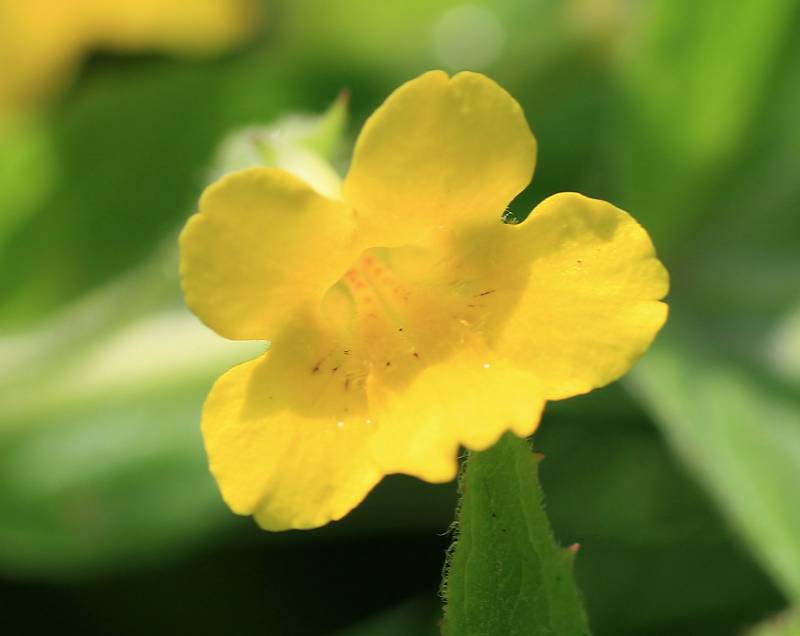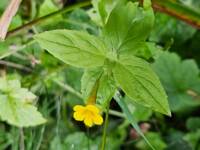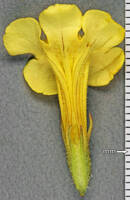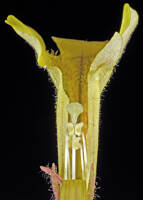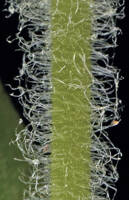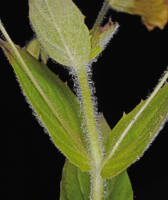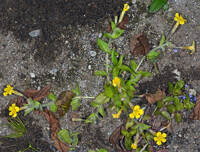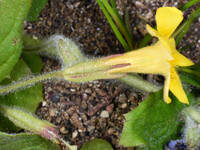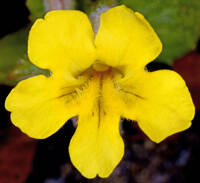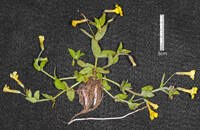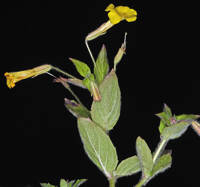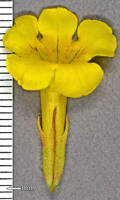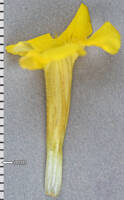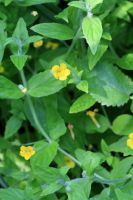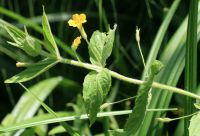Distribution: Occurring west of the Cascades crest in Washington; southern British Columbia to California.
Habitat: Wet places generally at low elevations.
Flowers: June-September
Origin: Native
Growth Duration: Perennial
Conservation Status: Not of concern
Rhizomatous perennials, occasionally rooting at nodes nearest base; stems 20-80 cm, prostrate or decumbent to ascending, only slightly branched, villous eglandular hairs 1-2 mm, occasionally with shorter stipitate-glandular hairs, internodes evident.
Leaves cauline, basal ones not persistent, commonly congested; subsessile to sessile; blade oblong to lanceolate, 30-70 mm long and 10-22 mm broad, pinnate venation, base rounded, margins toothed to finely toothed, apex acute, surfaces hairy as stems.
Axillary flowers 4-10, emerging from nodes at mid- to ends of stems; fruiting pedicels generally 22-50 mm, hairy as stems; calyx winged, cylindric-campanulate, barely inflated, 10-12 mm, villous with gland-tipped hairs, lobes spreading noticeably, strongly unequal, linear-lanceolate to slender-triangular, 5-9 mm, apex long acuminate-apiculate; corollas yellow, throat faintly marked with blackish-brownish lines, symmetric almost radially or weakly bilaterally, nearly regular or weakly bilabiate; tube-throat slenderly bell-shaped, 15-18 mm, protruding beyond calyx margin; lobe apex rounded; styles glabrous; anthers not protruding, covered with fine hairs that are stiff to slightly rigid.
Capsules 6-8 mm, included.
Publication: Phytoneuron 2017-17: 4. 2017.
PNW Herbaria: Specimen records of Erythranthe ptilota in the Consortium of Pacific Northwest Herbaria database
WA Flora Checklist: Erythranthe ptilota checklist entry
OregonFlora: Erythranthe ptilota information
E-Flora BC: Erythranthe ptilota atlas page
CalPhotos: Erythranthe ptilota photos

